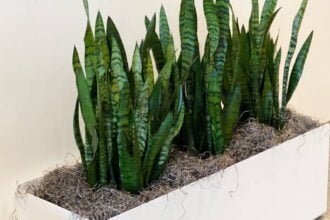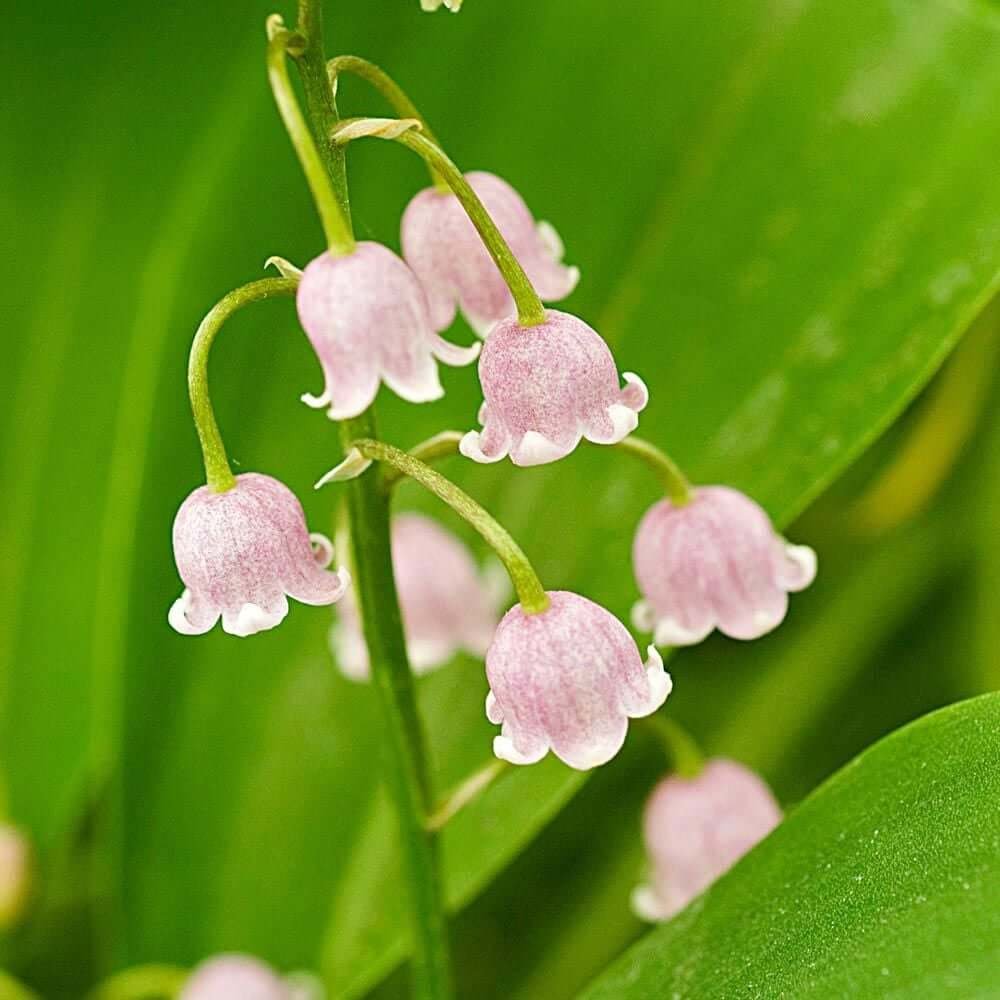Do you fantasize of having your very own banana tree in your backyard, complete with a tropical garden and delicious bananas? It’s not just you. Gardeners are increasingly drawn to banana trees for their eye-catching foliage and tasty fruit.
The global banana crop is expected to hit an all-time high of over 116 million metric tons in 2020, according to current estimates. This all-inclusive manual will provide you with the information and instruction you need to cultivate and maintain a healthy banana tree, allowing you to join the ranks of successful banana cultivators.
We’ll go over all the basics, from finding the right spot to growing your bananas to making sure they thrive, so you may soon be enjoying the sweet flavor of homegrown bananas. Get your hands dirty, because we’re about to embark on a tropical gardening expedition!
What is a Banana Tree?
A big perennial herbaceous plant, the banana tree is a member of the genus Musa and the family Musaceae. It looks like a tree but is a very large herb, despite its common name. Originally from the tropical regions of Southeast Asia, banana plants are today farmed all over the world for their delicious fruits.
The pseudostem, or trunk, of the banana plant, is made up of closely packed leaf sheaths. The plant is supported by a pseudostem that can reach heights of several meters. Large leaves sprout in a crown at the apex of the pseudostem.
Where Do Banana Trees Grow?
Banana plants are endemic to the tropics and subtropics of every continent. They were originally from the Southeast Asian countries of Malaysia, Indonesia, the Philippines, and other neighboring countries. Banana trees were once only grown in Southeast Asia, but modern farming and international trade have made this once-unthinkable.
What are the Benefits of Growing Banana Trees?
Banana trees are a popular choice for home gardens because they are relatively easy to grow and care for. They also provide several benefits, including:
- Food: Bananas are a delicious and nutritious fruit that can be eaten fresh, cooked, or baked. They are a good source of potassium, vitamin C, and fiber.
- Ornamental value: Banana trees are attractive plants that can add a tropical touch to any garden. They can also be used as a privacy screen or windbreak.
- Economic value: Banana trees can be a profitable crop for farmers. They are relatively easy to grow and can be harvested several times a year.
- Environmental benefits: Banana trees help to improve air quality and reduce noise pollution. They also provide shade and shelter for wildlife.
Choosing a Location
There are a few things to keep in mind while picking a spot for your banana tree:
- Full sun: Banana trees need at least 6 hours of direct sunlight per day.
- Well-drained soil: Banana trees do not tolerate wet feet. The soil should be loose and loamy, with good drainage.
- pH of 6.0 to 6.5: Banana trees prefer slightly acidic soil.
Preparing The Soil
How to get your soil ready for planting banana trees:
1. Add Compost or Manure
Soil fertility can be increased and moisture retention can be aided by using compost and manure. Dig compost or manure into the top six inches of soil to enrich it.
2. Improve Drainage
The drainage of the soil must be improved since banana trees cannot stand having their roots constantly moist. Sand or gravel added to the soil can help it drain better. Bananas can also be grown successfully in raised beds.
3. Increase Fertility
Soil fertility can be boosted in a number of ways, including by adding compost, manure, or a balanced fertilizer. Most garden shops will have balanced fertilizers.
Once you have prepared the soil, you are ready to plant your banana tree.
Additional Tips for Preparing the Soil
- Make sure the pH of the soil is between 6.0 and 6.5 by conducting tests. Lime or sulfur may need to be added to the soil if the pH level is excessively high or low.
- Clear the soil of any rocks or other unwanted items.
- Rake the ground to level it.
- Douse the ground in water.
Planting the Banana Tree
Here are the steps on how to plant a banana tree:
- Choose a location that gets full sun and has well-drained soil.
- Dig a hole that is twice as wide as the root ball of the tree.
- Place the tree in the hole and backfill it with soil.
- Water the tree well.
- Mulch around the tree to help retain moisture and suppress weeds.
Here are some additional tips for planting a banana tree:
- Select a pot with drainage holes that are at least 18 inches in diameter if planted in a container.
- To properly care for your tropical plants, use potting mix formulated for use with such plants.
- During the growing season, fertilize your banana tree once a month.
- Keep the frost and cold weather away from your banana plant.
Watering the Banana Tree
Here are the steps on how to water a banana tree:
- The tree needs a lot of water. It’s recommended that the water penetrate the soil by at least 6 inches.
- Leave some time between waterings for the soil to dry out. Before watering again, make sure the top inch of soil is dry.
- Root rot is caused by overwatering, therefore don’t do that.
- During hot and dry spells, you should water the tree more frequently.
- Banana trees grown in containers require more frequent watering than those planted in the ground.
Follow these additional tips for watering a banana tree-
- Water the tree thoroughly and consistently using a watering can or a hose fitted with a sprinkler attachment.
- Morning is the best time to water the tree, as this will allow the leaves to dry before evening.
- Mulch the area around the tree to prevent water loss and weed growth.
Fertilizing the Banana Tree
Banana trees need a steady supply of fertilizer in order to bear fruit. Fertilizing banana trees should be done in the spring and summer while the plants are actively growing. You can use a general-purpose fertilizer like 10-10-10, or one made especially for banana plants.
Spread the fertilizer around the tree’s base evenly, being careful not to get any on the leaves, and your banana tree will thrive. The fertilizer must be thoroughly watered in. Fertilizing your banana tree once a month is recommended while it is actively growing.
Potted banana trees require more frequent fertilization since the potting mix’s nutrients are used up more rapidly. Every two weeks during the growing season, give your banana tree some fertilizer in its pot.
Additional Tips for Fertilizing Banana Trees
- Apply a potash-rich fertilizer. Banana trees can’t grow or produce fruit without potassium.
- The roots of your banana tree might be damaged by using too much fertilizer.
- You shouldn’t add fertilizer to your banana plant’s soil if it’s dry.
- The fertilizer must be thoroughly watered in.
Pests and Diseases
Here are some tips on how to protect your banana tree from pests and diseases:
- Inspect your tree regularly. The best way to prevent pests and diseases is to catch them early. Inspect your tree regularly for signs of pests and diseases, such as:
- Scale: Small, round insects that attach themselves to the bark of the tree.
- Mealybugs: White, fuzzy insects that also attach themselves to the bark of the tree.
- Spider mites: Tiny, red or yellow insects that feed on the leaves of the tree.
- Banana leaf spot: Brown spots on the leaves of the tree.
- Black Sigatoka: A fungal disease that causes black spots on the leaves of the tree.
- Panama disease: A fungal disease that can kill banana trees.
- Remove any infected leaves or branches. If you find any infected leaves or branches, remove them immediately. This will help to prevent the spread of the pest or disease.
- Use insecticidal soap or neem oil. If you find a pest infestation, you can use insecticidal soap or neem oil to control the pests. Be sure to follow the directions on the label carefully.
- Water your tree regularly. Watering your tree regularly will help to keep the leaves healthy and prevent them from drying out, which can make them more susceptible to pests and diseases.
- Fertilize your tree regularly. Fertilizing your tree regularly will help to keep it healthy and resistant to pests and diseases.
- Plant your tree in a sunny location. Banana trees need full sun to thrive. Planting your tree in a sunny location will help to keep it healthy and prevent it from becoming stressed, which can make it more susceptible to pests and diseases.
- Avoid planting your tree in an area that is prone to flooding. Flooding can damage the roots of your banana tree, making it more susceptible to pests and diseases.
- Prune your tree regularly. Pruning your tree regularly will help to improve air circulation, which can help to prevent the spread of pests and diseases.
- Mulch around your tree. Mulch around your tree will help to retain moisture and suppress weeds, which can help to prevent pests and diseases.
Harvesting
Here are the steps on how to harvest bananas:
- Choose the right time to harvest. Bananas are ready to harvest when they are still green, but they are starting to turn yellow. If you wait too long to harvest, the bananas will become overripe and mushy.
- Use a sharp knife to cut the banana bunch from the tree. Be sure to leave a few inches of stem on the bunch.
- Place the banana bunch in a cool, dark place. This will help the bananas to ripen slowly.
- Enjoy your delicious bananas!







